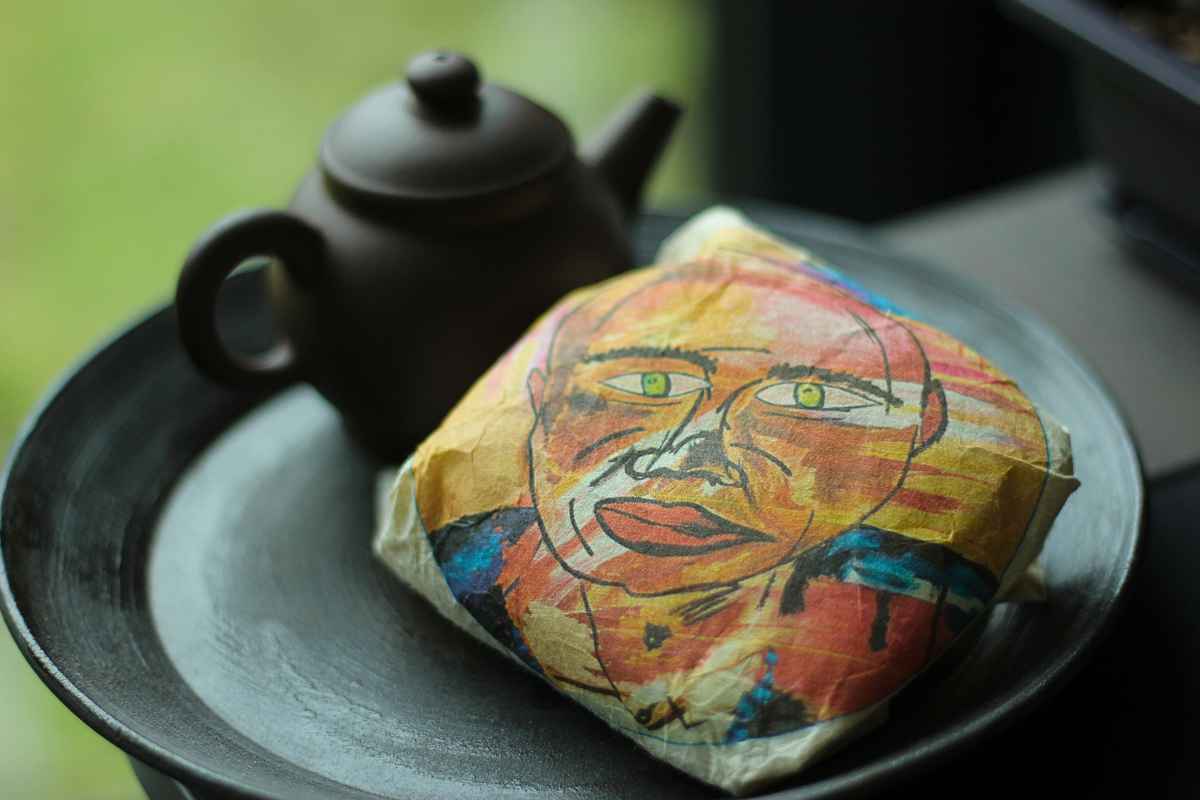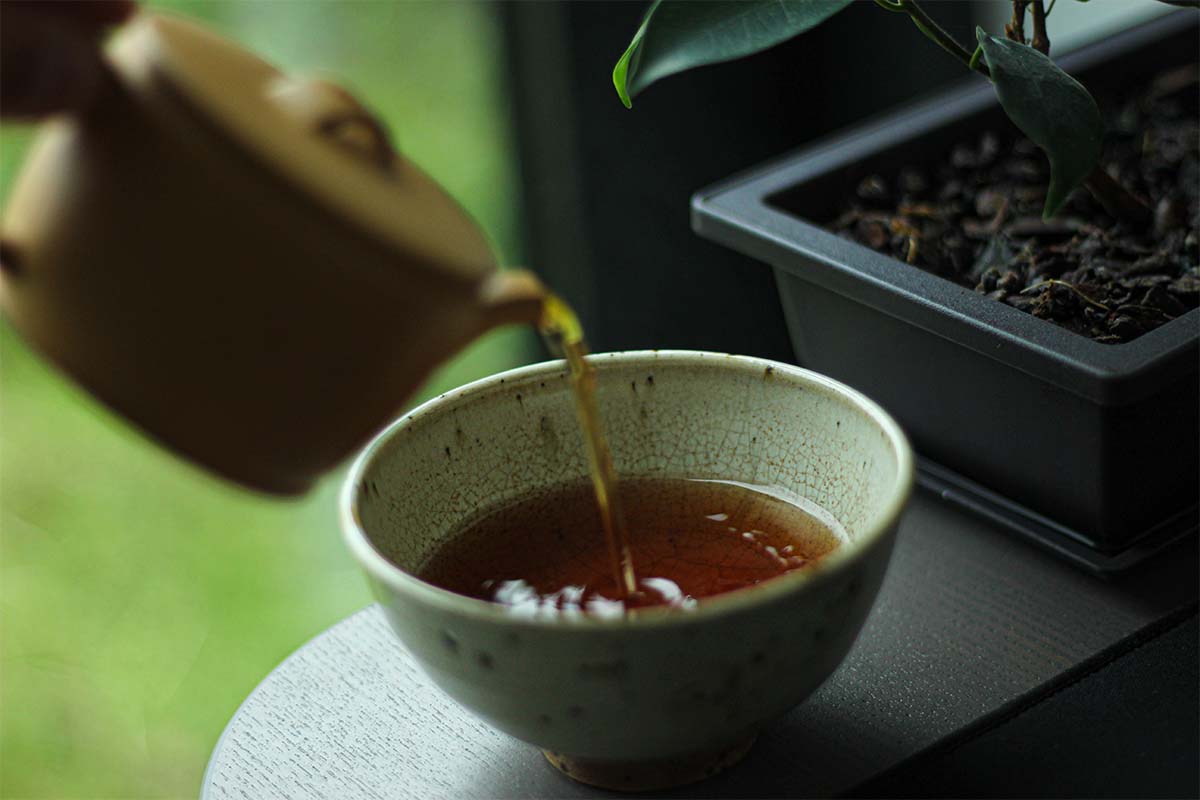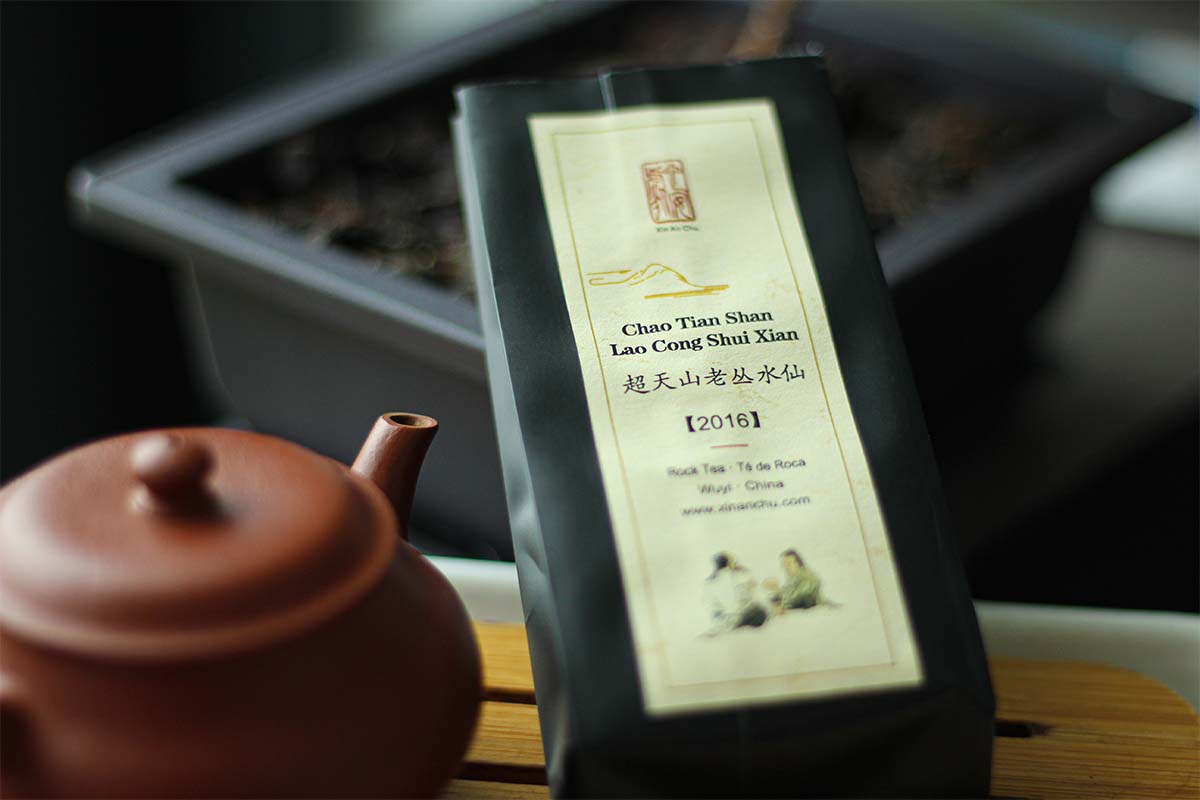Gyokuro is considered to be the most sought-after leaf tea in Japan. Tea connoisseurs are drawn to this unique tea because of its trademark sweet and savory flavor. This flavor is no accident, it’s the result of many weeks of hard work and careful production techniques. In this article, we’re going to talk about how gyokuro is made, and why it has such a distinct flavor.
What is Gyokuro?
Gyokuro is a type of Japanese green tea that is quite similar to sencha, with a few key differences. You can tell a gyokuro tea apart from a sencha tea by looking at the leaves.
Gyokuro will have these long, tightly rolled needle-shaped leaves, while sencha leaves will be a little bit looser and flatter. The leaves of Gyokuro will also be a much darker green color, and they will almost look black in comparison.
The flavor of gyokuro tea is also unique. While sencha tends to have a bit more of these light grassy notes, Gyokuro is much more intense, with flavors of asparagus, seaweed, and vegetable broth. This brothier flavor is described as being savory or “umami” which is unique in the world of tea. Gyokuro is a celebration of these umami flavors, and the farmers that produce the tea work very hard to perfect this flavor.

Don’t know where to buy tea online? I made a list of over 300 online tea shops and I keep updating it regularly. You can check it over here
How is Gyokuro Made
Gyokuro is one of the more labor-intensive Japanese green teas, and this partially explains the high price tag. The production process can be broken down into 3 basic steps, shading, picking, and processing. Let’s go through each step together.
Shading of Gyokuro
The work of producing Gyokuro begins before the tea is even picked. The plants used to make Gyokuro have to go through a 3-week shading process. During this time, the tea plant is cut off from sunlight with a type of netting called Kabuse.
Normally, when a tea plant is exposed to sunlight it will convert theanine into catechins as a protection against UV light. Theanine is what gives the tea leaves their sweet and savory flavor, and catechins are what give the tea their bitterness. In order to reduce the amount of bitterness in the leaves, and maximize the sweet and savory theanine, the farmer will cover the plant before the harvest.
During the shading process, the tea plant also produces more chlorophyll. Just like with other types of plants, the tea plant uses chlorophyll to help it convert sunlight into energy during photosynthesis. Because there is less sunlight, the plant needs to produce more chlorophyll to compensate. This also causes the leaves to change color from light green to deep dark green. This is why you can tell a shaded tea from an unshaded tea just by looking at the leaves.
Picking of Gyokuro
After the leaves have been shaded for 3 weeks, they are ready to be picked. If the Gyokuro tea is to be handpicked, the farmer will need to build a scaffolding to allow space for people to come in and harvest the leaves. This harvesting is done for only one day out of the year, and people come from all over the town to help pick the tea.
When picking the tea, it is important to only go for the youngest 3 sprouts at the top of the tea plant. These will be the sweetest and most flavorful, but also the highest in nutrients. The youngest leaves also produce the most caffeine. This is because caffeine is produced by the plant as a defense mechanism to protect against insects and the sprouts are more tender and vulnerable.
Once the leaves have been harvested, they must quickly be gathered up and brought over to the production facility for processing.
Processing of Gyokuro
The processing phase needs to take place almost immediately after harvesting so that the tea doesn’t begin to oxidize. Once the tea leaves are picked, they will begin to oxidize naturally and eventually the tea will turn into black tea. If the farmer wants to stop this oxidation process, he will have to apply heat to the tea leaves.
In China, it is more common to apply heat in a large hot pan, but in Japan, the method of choice is a steam bath. This heat deactivates the enzymes that cause oxidation and allows the tea leaves to retain their green color and their more vegetal taste characteristics.
After the tea leaves have been steamed, they are taken through a controlled drying process. The tea leaves come into the conveyor belt at about 70% moisture content, and they need to be brought down to about 4-7% so that they can infuse properly into the water.
This drying process can’t be done at high heat, or it will affect the taste of the gyokuro, so it is done in a controlled environment, at a low temperature for an extended period of time. Before this drying process is completed, the tea leaves need to be rolled to get their distinct pine needle shape.
The rolling process needs to be done before the final drying occurs, so the leaves are still pliable. This allows them to be rolled and shaped without breaking. Gyokuro has an extra rolling phase. In addition to the regular brush rolling that sencha tea gets, it also is rolled a second time in a specialized machine. This really helps to tightly roll the needles and lock in the flavor.
After the leaves take on their final shape, they are taken for the final drying process, where they will be completely dried and packaged.
Why Organic Gyokuro is so Difficult to Produce
To be considered a Gyokuro, the tea plant needs to be shaded for 3 weeks or more. This period of time is very stressful for the tea plant, and it is difficult just to keep it alive. Most farmers’ solution to this is to apply chemical fertilizers and pesticides to support the growth of the plant. This solution is not available to organic farmers, so finally it comes down to skill and technique.
Mr. Sakamoto, who makes all of the Gyokuro for Nio Teas employs his own organic fertilizer to keep the plants strong and healthy. This organic fertilizer is made with a combination of sedimentary rock and organic compost. This allows the tea plant to draw nutrients from the soil throughout the growing season.
According to Mr. Sakamoto Green Tea standards, the tea plants grown with this fertilizer are stronger and healthier than those produced with conventional methods. He measures this by taking two clippings from his field and comparing it with another tea field. After putting them in a vase of water, the conventionally grown plants soon deteriorate, whereas his plants remain strong for weeks outside of the soil. Even without chemicals, he is able to produce this powerful sweet and savory flavor in his Gyokuro teas, and he does so in a healthy, sustainable way.
How to prepare Gyokuro tea
When it comes to preparing Gyokuro tea, it is very similar compared to normal Japanese green tea. You still use 5 grams of leaves in a kyusu teapot and 150ml of water. The two things to keep in mind are that you want to use lower temperature water, and you want to brew the leaves for a longer time, up to 2 minutes.
The reason you use a lower temperature is to produce a smoother and sweeter tea. Gyokuro is prized for its sweet flavor and lack of bitterness, and this low-temperature brewing accentuates that. The bitter catechins are harder to extract, so they really only come out when the tea is brewed at a higher temperature. That’s why if you want your tea to be less bitter, you can brew it with cooler water.
The reason you use a longer brewing time is that the leaves are so tightly rolled, they need a full two minutes to expand. For the second steeping of the tea, you only need 20 seconds, because the leaves have already been opened up. You can brew Gyokuro tea 3-4 times in total.
Benefits of Gyokuro
Because of the long shading and picking process, Gyokuro tea has quite a few benefits. It has the highest caffeine of any tea, but also the highest theanine. Theanine is thought to slow the absorption of caffeine, giving you a longer-lasting “calm alert” sensation that lasts throughout the day.
A lot of Gyokuro drinkers that have switched from coffee, report having more sustainable energy, without the crash or jitters. Gyokuro can be good for long periods of work and study, or it can just be a delicious drink to enjoy in the morning!
Where to Find Gyokuro Tea
If you are looking to try some Gyokuro tea grown without pesticides, you can find it at Nio Teas. There is a wide assortment of Gyokuro teas that are broken down by cultivar or tea plant variety.
The Gyokuro Cha Musume is a good gyokuro for beginners, made from the Yabukita cultivar. This is the most widely used cultivar in Japanese green teas, and in this Gyokuro it produces a straightforward umami flavor.
The Gyokuro Wakamusha is made from the Okumidori cultivar. This tea plant variety is known for its well-rounded and smooth flavor. If you are a fan of the more steamed vegetable tasting notes, this gyokuro is the best choice.
The Gyokuro Cha Meijin is the master’s Gyokuro, made from the Saemidori cultivar. This cultivar is known for its light and sweet flavor and lack of bitterness. If you are looking for the Gyokuro tea that has the most sweetness, the cha meijin is the perfect candidate.
The Gyokuro Karigane is one of the best types of Sakamoto Green Tea. It is a stem tea made from the stems and leaves of Gyokuro, Sencha, and Kabusecha. In this case, the stem tea comes from Mr. Sakamoto’s Gyokuro. The tea is shaded for 21 days, boosting the levels of amino acids and sweetness. The tea is low in caffeine compared to leaf teas, but higher in caffeine than the Kukicha.
Further reading
- Everything You Need to Know About Gyokuro Tea
- Gyokuro vs Sencha: Differences & Comparisons
- Why is the Gyokuro Tea Price so High?
- All you need to know the Gyokuro Plant
- Learn More about the Gyokuro Tea Benefits
- Gyokuro tea bags: Read this Before Buying
- Complete Guide about Tea Harvesting
- Where Does Japanese Tea Grow?
- List of the Best Cheap Loose Leaf Green Teas
- Growing Tea Leaves Guide
- How to Sweeten Green Tea
- History of Green Tea in Japan & Tea ceremony
- Which Tea has the Most Caffeine




